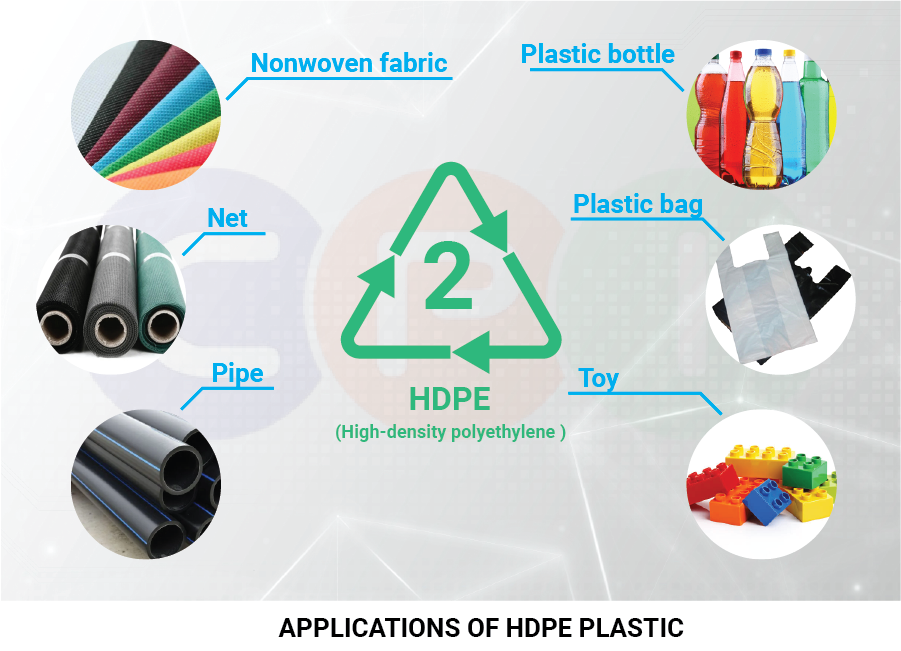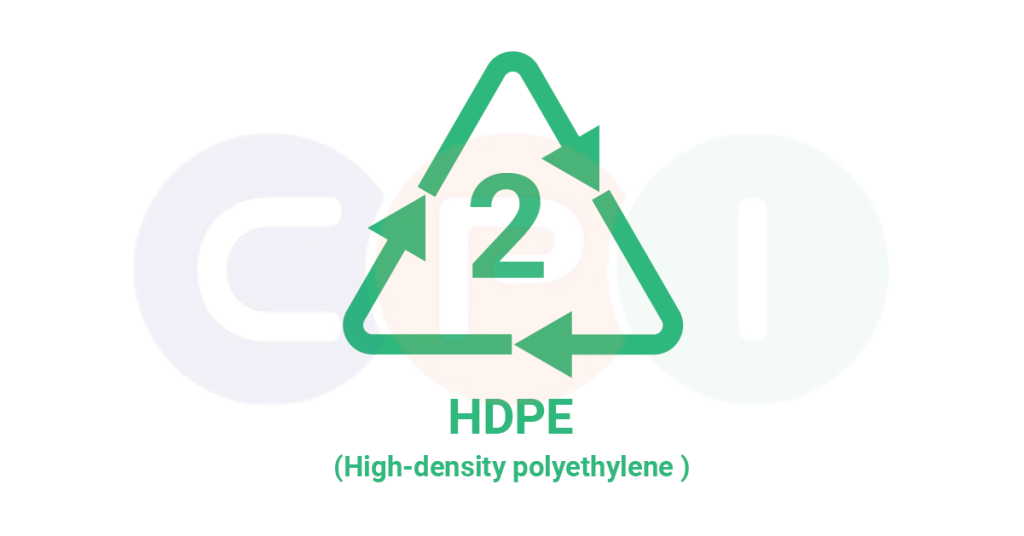Plastic knowledge
HDPE plastic – Characteristics and applications
HDPE plastic is one of the most commonly used plastics in many industries and daily lives; However, many people still do not fully understand it. The article below will provide complete information about HDPE plastic as well as answer questions related to this type of plastic.
I. What is HDPE plastic?
HDPE plastic stands for High-density polyethylene, it’s a thermoplastic produced from petroleum-derived monone ethylene. HDPE is based on PE plastic with high density, so it has higher hardness and impact resistance than regular PE plastic. The molecular structure of HDPE consists of ethylenes linked together to form long chains. This creates a flexible structure that can withstand pressure and impact, while also resisting dissolution and corrosion by chemicals and other environmental agents.
II. Characteristics of HDPE plastic
A. Technical specifications
| Density | 930 ~ 970 kg/m3 |
| Melting point | 130.8 °C |
| Crystallization temperature | 111,9 °C. |
| Melting heat | 178.6 kJ/kg |
| Thermal conductivity | 0,44 W/m.°C. ở °C. |
| Specific heat capacity | 1330 đến 2400 J/kg-Kz |
| Specific heat capacity (solid) | 1,9 kJ/kg. °C. |
| Crystallinity | 60% |
B. Advantages
- Long lifespan: HDPE has outstanding strength and impact resistance; Resistant to corrosion from strong chemicals such as salt and acid; Limit the impact of sunlight or harsh conditions.
- Good heat resistance: HDPE has superior heat resistance compared to other plastics. Not only can it withstand high temperatures up to 120oC, but HDPE plastic can also withstand temperatures of -40oC.
- Fire resistant: HDPE only ignites at a temperature of 327oC, providing outstanding fire resistance.
- Light weight: The density of HDPE ranges from 930 to 970 kg/m3.
- Flexible, good elasticity: HDPE plastic is quite flexible and has good elasticity, so many types of pipes made from HDPE plastic can be bent in all kinds of ways to make construction easier.
- Easy to process: HDPE plastic is malleable so it can easily be molded and transformed into any shape and product as required.
- Easy to recycle: HDPE is one of the easiest and most recycled plastics of all plastics.
C. Disadvantages
- Products made from HDPE may crack or deform when the temperature changes suddenly and erratically.
- The surface is difficult to clean, when used to store food, it needs to be cleaned thoroughly.
III. Application of HDPE
HDPE is a versatile plastic material, its outstanding advantages are suitable for many different applications in different industries.

A. Packaging
HDPE is commonly used for packaging purposes due to its excellent strength and durability. It is commonly used to make bottles, containers, and lids for various products, including foods, beverages, and household chemicals. HDPE’s resistance to moisture and chemicals makes it an ideal choice as a packaging material.
B. Pipes and accessories
HDPE pipes and fittings are widely used in the construction industry for water and gas distribution systems. The material’s high strength, flexibility and corrosion resistance make it a reliable choice for underground piping. HDPE pipes are also used in agricultural irrigation systems and wastewater networks.
C. Geomembrane
HDPE geomembranes are used in various environmental protection applications. These waterproof liners are used to contain and prevent liquid or gas leaks. They are commonly used in landfills, mining waste and wastewater treatment facilities.
D. Auto parts
HDPE is used in the production of various automotive components. It is commonly used for fuel tanks, bumpers and interior trim parts. HDPE’s lightweight nature, impact resistance, and ability to withstand extreme temperatures make it the preferred choice for automotive applications.
E. Toys and sports equipment
HDPE is often used to make toys and sports equipment due to its safety and high durability. It is commonly used for playground equipment, water toys and outdoor furniture. HDPE’s resistance to UV radiation and harsh weather conditions makes it a suitable choice for outdoor applications.
F. Medical supplies
HDPE is used in the production of medical supplies and equipment. It is commonly used for medical packaging, syringes, and containers for storing drugs. HDPE’s chemical resistance and ability to withstand sterilization make it a reliable choice for healthcare applications.
IV. Frequently asked questions related to HDPE plastic
A. Is HDPE plastic safe? – Is HDPE plastic toxic?
HDPE plastic is considered safe to use. It is known for its chemical resistance and ability to withstand high temperatures. HDPE also does not contain toxic chemicals such as bisphenol A (BPA) or phthalates; Under normal conditions, it does not emit toxic chemicals that pose a threat to health or the environment. However, it is important to follow proper use and disposal instructions to ensure safety for both people and the environment.
B. Can HDPE plastic be reused?
HDPE plastic can be reused many times without losing its properties.HDPE withstands high temperatures, has good durability and chemical resistance. Therefore HDPE can be sterilized with boiling water or chemical disinfectants.
C. Can HDPE plastic be recycled?
HDPE plastic is a recyclable plastic. When properly sorted and processed, HDPE plastic can be melted down and reformed into new products, reducing the need for virgin plastic production and minimizing waste. Therefore, HDPE plastic is considered an environmentally friendly choice.
———————————————–

